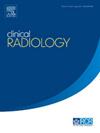The diagnostic model from semi-supervised cross modality transformation improved the distinguished ability of X-rays for pulmonary tuberculosis
IF 1.9
3区 医学
Q2 RADIOLOGY, NUCLEAR MEDICINE & MEDICAL IMAGING
引用次数: 0
Abstract
Background
Early diagnosis of tuberculosis is particularly difficult in resource-poor areas. Traditional chest X-rays (CXR) have limited accuracy, while CT scans are costly and involve radiation exposure. The study aims to improve the diagnostic accuracy of routine X-rays for pulmonary tuberculosis to approximate the performance of CT scans through building Artificial Intelligence (AI) model, suitable for primary healthcare settings lacking CT facilities.
Methods
In this study, datasets from our hospital and two open-source datasets, namely the Shenzhen Hospital dataset (CHNCXR) and the Montgomery County dataset (MC), were included. A semi-supervised cross-modality transformation computational model was employed to independently train deep learning models based on X-ray and CT images. Transfer learning was utilized for pre-training on ImageNet, and the model performance was evaluated using 5-fold cross-validation.
Results
In the evaluated patients, MX’(final augmented X-ray model) shows a standout performance in diagnosing pulmonary tuberculosis (PTB) using chest X-rays, with a 6% increase in high precision and a 1.8% increase in specificity, significantly surpassing the original X-ray model MX(X-ray model). Although MX’ has a lower sensitivity (0.778) compared to MX (0.815), its overall balance makes it highly suitable for initial screenings. The model's ability to prioritize accuracy and specificity highlights its potential for effective deployment in clinical scenarios with follow-up testing options.
Conclusions
The novel diagnosis model based on the AI method strikes a meaningful balance between precision and accessibility. This makes MX’ a practical alternative in resource-limited settings, offering a more efficient and scalable solution for tuberculosis diagnosis and screening.
半监督交叉模态变换诊断模型提高了x线对肺结核的鉴别能力
背景结核病的诊断在资源贫乏地区尤其困难。传统的胸部x光(CXR)准确度有限,而CT扫描价格昂贵且涉及辐射暴露。本研究旨在通过建立人工智能(AI)模型,提高常规x线对肺结核的诊断准确性,以接近CT扫描的性能,适用于缺乏CT设备的初级卫生保健机构。方法本研究采用我院数据集和两个开源数据集,即深圳医院数据集(CHNCXR)和蒙哥马利县数据集(MC)。采用半监督跨模态变换计算模型对基于x射线和CT图像的深度学习模型进行独立训练。利用迁移学习在ImageNet上进行预训练,并使用5倍交叉验证来评估模型的性能。结果在评估的患者中,MX(最终增强x线模型)在胸部x线诊断肺结核(PTB)方面表现突出,高精度提高了6%,特异性提高了1.8%,明显超过了原始x线模型MX(x线模型)。虽然MX的灵敏度(0.778)低于MX(0.815),但其总体平衡使其非常适合初始筛选。该模型优先考虑准确性和特异性的能力突出了其在临床场景中有效部署的潜力。结论基于人工智能方法的新型诊断模型在准确性和可及性之间取得了很好的平衡。这使得MX在资源有限的环境中成为一种实用的替代方案,为结核病诊断和筛查提供了更有效和可扩展的解决方案。
本文章由计算机程序翻译,如有差异,请以英文原文为准。
求助全文
约1分钟内获得全文
求助全文
来源期刊

Clinical radiology
医学-核医学
CiteScore
4.70
自引率
3.80%
发文量
528
审稿时长
76 days
期刊介绍:
Clinical Radiology is published by Elsevier on behalf of The Royal College of Radiologists. Clinical Radiology is an International Journal bringing you original research, editorials and review articles on all aspects of diagnostic imaging, including:
• Computed tomography
• Magnetic resonance imaging
• Ultrasonography
• Digital radiology
• Interventional radiology
• Radiography
• Nuclear medicine
Papers on radiological protection, quality assurance, audit in radiology and matters relating to radiological training and education are also included. In addition, each issue contains correspondence, book reviews and notices of forthcoming events.
 求助内容:
求助内容: 应助结果提醒方式:
应助结果提醒方式:


